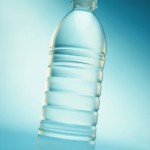 This morning I rode my bike over 25 kilometers in a bike-a-thon. What a great way to start the day! Observing the fall foliage in open air instead of through a car window really hit the spot. But despite the cooler weather I found myself re-hydrating at regular intervals with a mixture of water and powdered electrolytes. Looking around at other riders I wondered, am I the only one here drinking from stainless steel? Sure, it’s not as convenient as those squeezable plastic bottles popular with outdoor enthusiasts. But for health reasons, I threw my plastics in the recycle bin back when the dangers of BPA (bisphenol-A) hit the mainstream media and have never looked back. Why?
This morning I rode my bike over 25 kilometers in a bike-a-thon. What a great way to start the day! Observing the fall foliage in open air instead of through a car window really hit the spot. But despite the cooler weather I found myself re-hydrating at regular intervals with a mixture of water and powdered electrolytes. Looking around at other riders I wondered, am I the only one here drinking from stainless steel? Sure, it’s not as convenient as those squeezable plastic bottles popular with outdoor enthusiasts. But for health reasons, I threw my plastics in the recycle bin back when the dangers of BPA (bisphenol-A) hit the mainstream media and have never looked back. Why?
Xeno-estrogens. What is a xeno-estrogen? “xeno” literally means foreign. So xeno-estrogens means foreign estrogens. These are a diverse group of some 100,000 synthetic chemicals that act like estrogen in the human body. The body does not know the difference between your estrogen and a xeno-estrogen, and the breakdown products produced by the liver from xeno-estrogens have been shown to remain highly estrogenic. This means they can ‘plug in’ to any cell lined with estrogen receptors and ‘talk’ to the nucleus of that cell, giving it instructions on when and how to divide. This can make a significant difference in breast cancer risk.
Just because a plastic container is “BPA-Free” does not make it safe. In fact some of the substitutes companies are now using instead of BPA are just as bad. Take BPS. This plastic component has the same properties as BPA but somehow has escapes scrutiny by health- and environmentally- conscious activists.
Here are some plastics that have estrogenic properties:
- PVC (polyvinyl chloride)
- polystyrene (styrofoam)
- Lexan
- most plastic water cooler bottles labeled #7
- plastic bottles labeled #3
For more info on xeno-estrogens in plastics, click here.
What about phyto-estrogens? These plant-based estrogen-mimickers (such as those found in legumes) are dismantled more easily by the liver’s detoxification processes so they are confer very weak activity—hundreds of times weaker than xeno-estrogens do. There are now foam cups made from corn and soybean instead of chemicals which is a step in the right direction (though I prefer to recommend re-usable bottles for conservations reasons).
If you haven’t yet replaced your plastic water bottle with something inert, consider these healthful options:
1. Stainless steel. My favourite water bottle is a Purica brand 18/8 steel vaccuum cannister. It’s insulated, keeping your drink cool and has a 2-stage twist-off lid for ease of filling and drinking.
2. Glass. Life Factory offers pretty, portable glass drinking vessels with a silicone sleeve for better grip. Of course, this also has the bonus of making it resist breakage.
As long as your bicycle has a cage that fits your bottle snugly, you won’t have to worry about it bouncing out!
